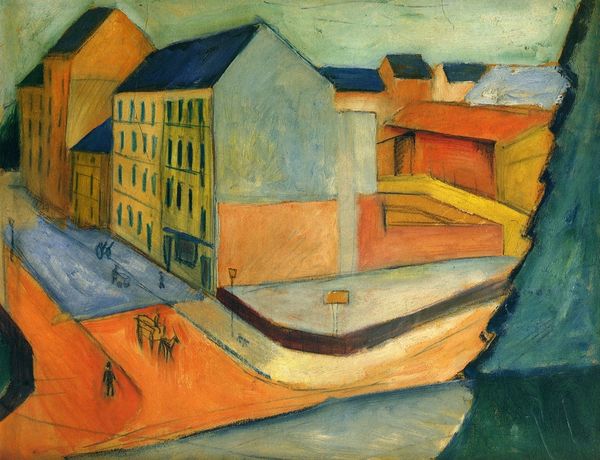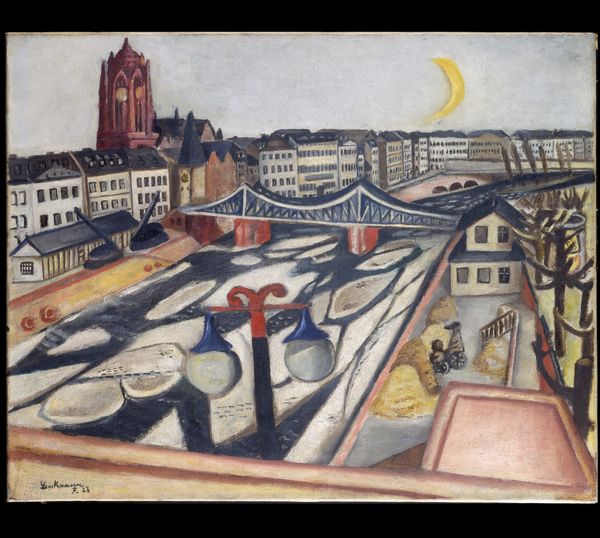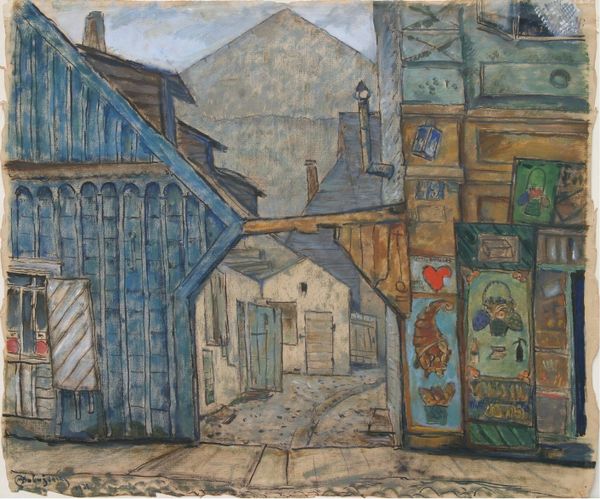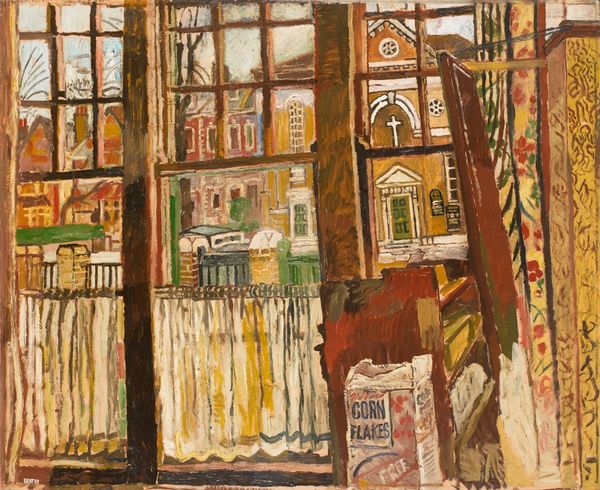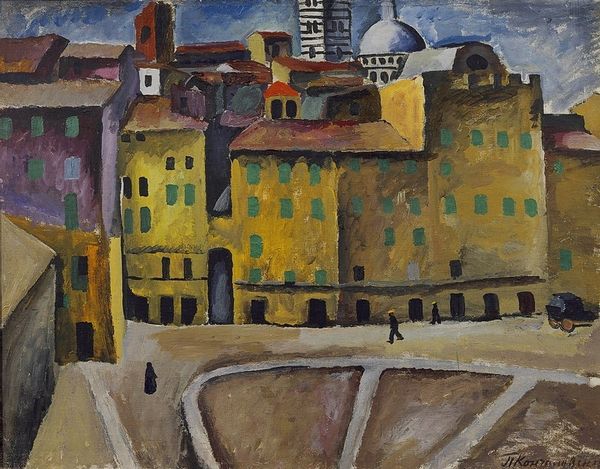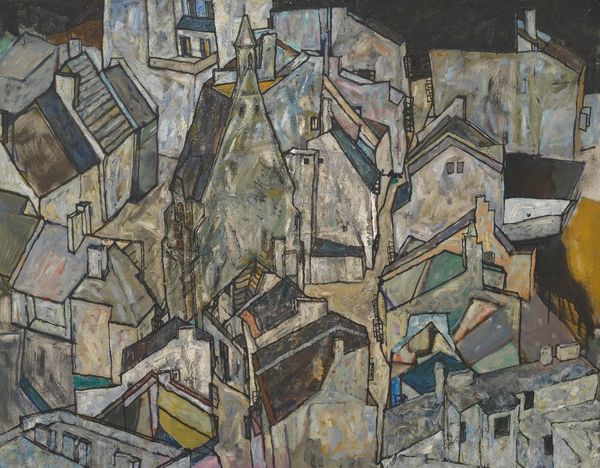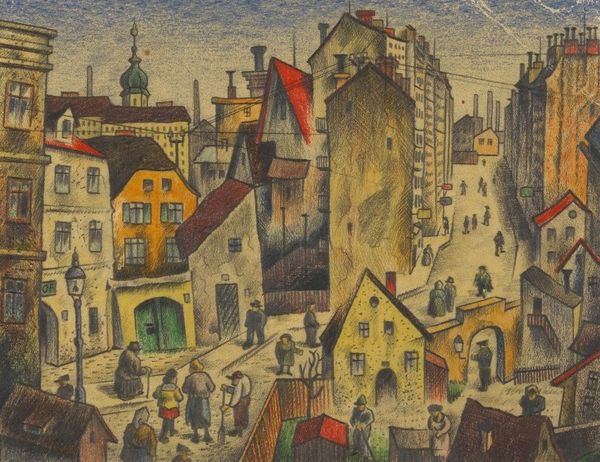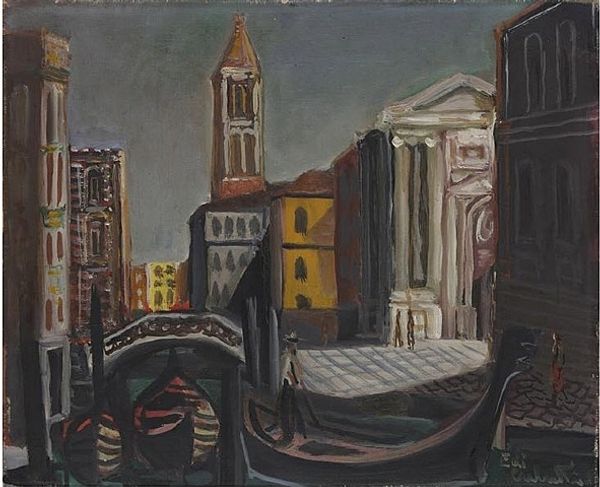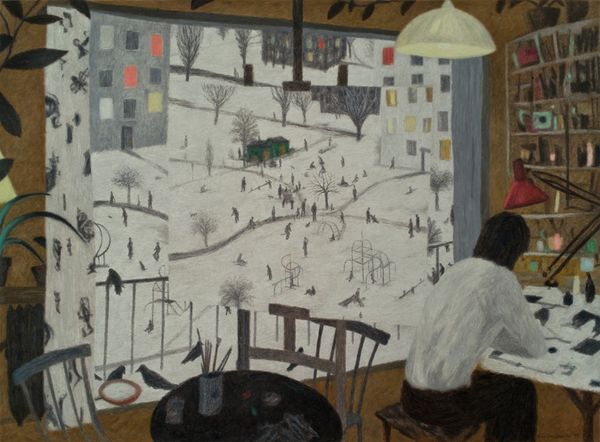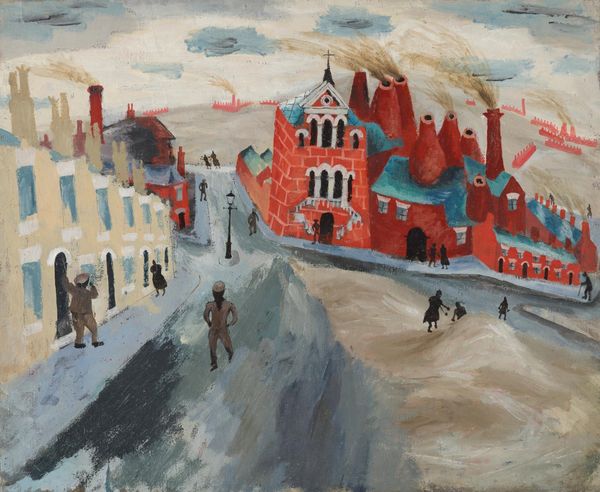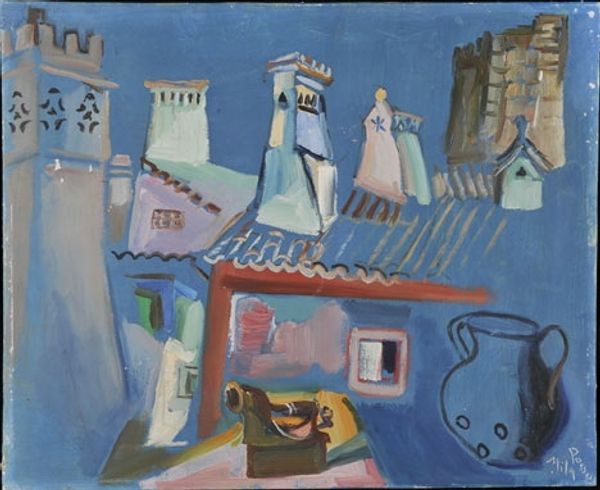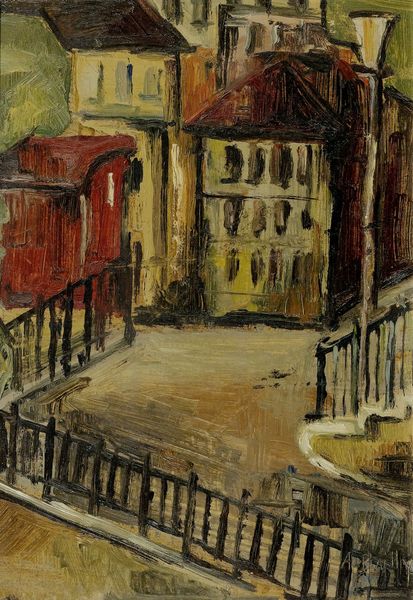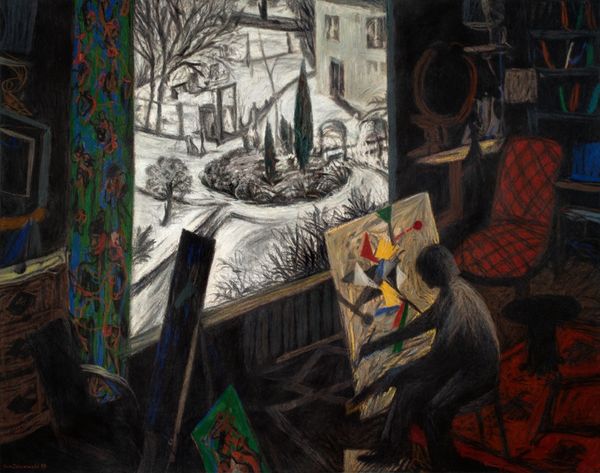
oil-paint, oil
#
portrait
#
oil-paint
#
oil
#
landscape
#
german-expressionism
#
figuration
#
handmade artwork painting
#
expressionism
#
cityscape
#
building
Dimensions: 89.8 x 140.4 cm
Copyright: Public Domain
Max Beckmann created "The Synagogue in Frankfurt am Main" using oil on canvas. The composition presents an urban scene imbued with distorted perspectives and unsettling angles. The buildings lean precariously, and the colors, though muted, evoke a sense of unease, hinting at a reality unhinged. Beckmann employs a visual language that disrupts conventional spatial logic. The scene feels claustrophobic, intensified by the compression of forms and the tilting of architectural structures. One can observe the influence of Expressionism in the painting’s raw emotional intensity, while Cubist-inspired fragmentation destabilizes any fixed viewpoint. The visual disruption challenges the viewer's sense of order, reflecting the fracturing of societal norms. Notice how Beckmann subverts traditional representation. Through his deliberate distortions and unsettling composition, he conveys a deeper, more subjective truth about the instability of the world.
Comments
stadelmuseum about 2 years ago
⋮
Its buildings lurching and swaying, the unsettled townscape seems almost to devour a small group of people. It is the painter himself, dressed in black, and his friends Ugi and Fridel Battenberg on their way home from a night out celebrating Carnival. They are passing the synagogue with its onion-shaped dome on Frankfurt’s Börneplatz square. The windows are brightly lit: morning prayers are in progress inside. The scene symbolizes the threatening circumstances of the period following World War I, which for Beckmann himself was one of existential crisis. The Synagogue in Frankfurt am Main was the first of a series of cityscapes he painted in Frankfurt between 1915 and 1933.
Join the conversation
Join millions of artists and users on Artera today and experience the ultimate creative platform.
